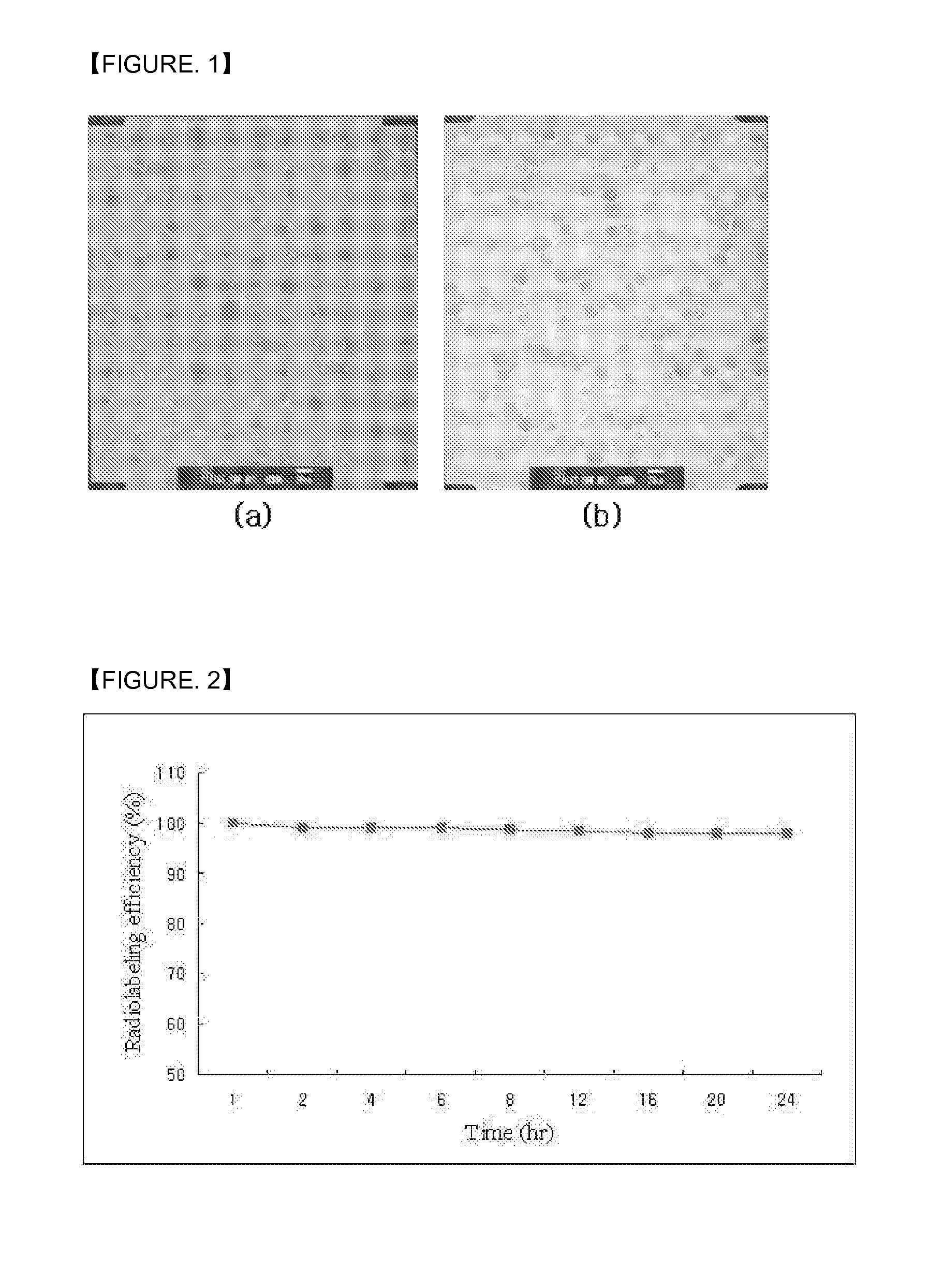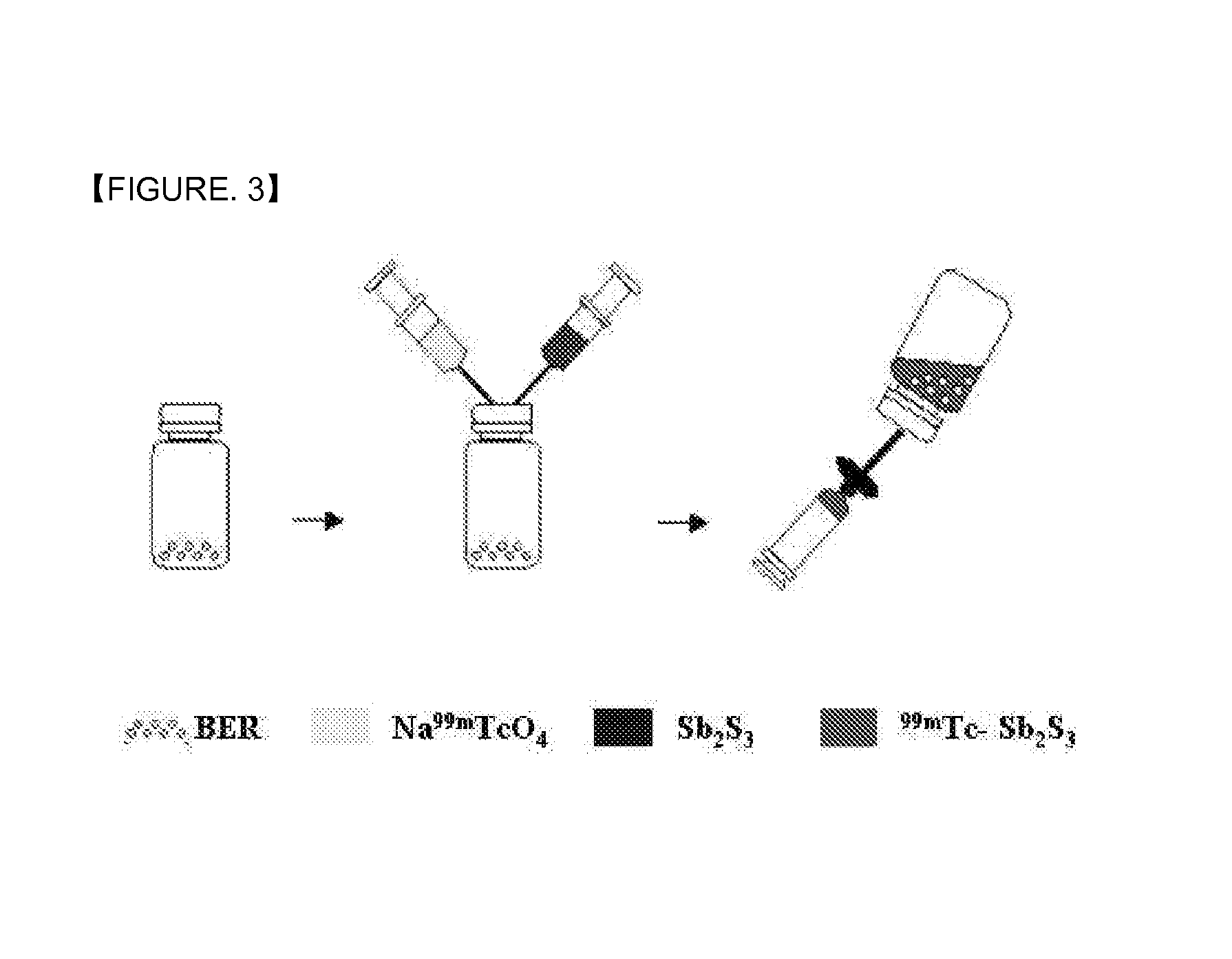Method for preparing technetium-labeled antimony sulfide nanocolloid
a technology of antimony sulfide and nanocolloid, which is applied in the field of preparation of technetium antimony trisulfide nanocolloid, can solve the problems of chemical bond breakdown and unstable chang
- Summary
- Abstract
- Description
- Claims
- Application Information
AI Technical Summary
Benefits of technology
Problems solved by technology
Method used
Image
Examples
Embodiment Construction
[0022]Practically preferred embodiments of the present invention are illustrative as shown in the following Examples.
[0023]However, it will be appreciated that those skilled in the art, on consideration of this disclosure, may make modifications and improvements within the spirit and scope of the present invention.
Preparation of Antimony Trisulfide Nanocolloides (ASC, Sb2S3)
[0024]Hydrogen sulfide (H2S) was added into 120 ml of distilled water that was cooled to 0˜5° C., to prepare the saturated hydrogen sulfide solution. 10 ml of 3.5% polyvinylpyrrolidone (PVP-mw 40,000) was added into the saturated hydrogen sulfide solution. After stirring for 5 minutes, 20 ml of 1% antimony potassium tartrate was added, followed by further stirring for 5 minutes to give antimony trisulfide nanocolloid (Sb2S3 nanocolloid). Hydrogen sulfide was eliminated by using nitrogen gas, and the elimination of hydrogen sulfide was confirmed by lead acetate paper. The solution was filtered by 0.22 μm membrane...
PUM
| Property | Measurement | Unit |
|---|---|---|
| particle size | aaaaa | aaaaa |
| particle size | aaaaa | aaaaa |
| temperature | aaaaa | aaaaa |
Abstract
Description
Claims
Application Information
 Login to View More
Login to View More - R&D
- Intellectual Property
- Life Sciences
- Materials
- Tech Scout
- Unparalleled Data Quality
- Higher Quality Content
- 60% Fewer Hallucinations
Browse by: Latest US Patents, China's latest patents, Technical Efficacy Thesaurus, Application Domain, Technology Topic, Popular Technical Reports.
© 2025 PatSnap. All rights reserved.Legal|Privacy policy|Modern Slavery Act Transparency Statement|Sitemap|About US| Contact US: help@patsnap.com


